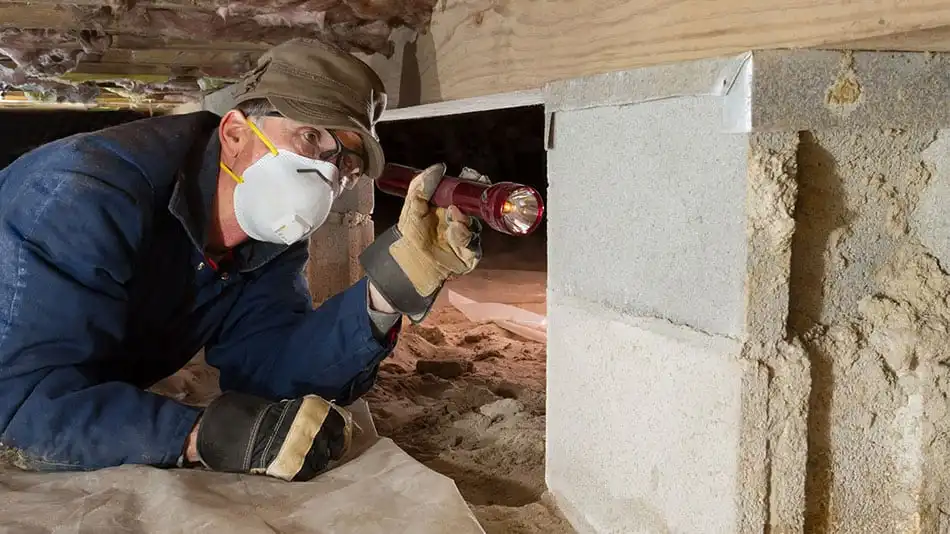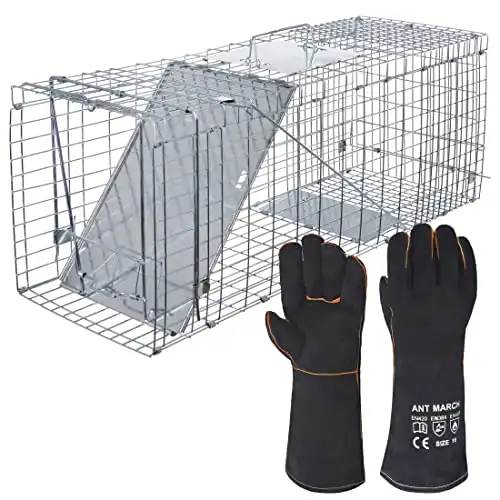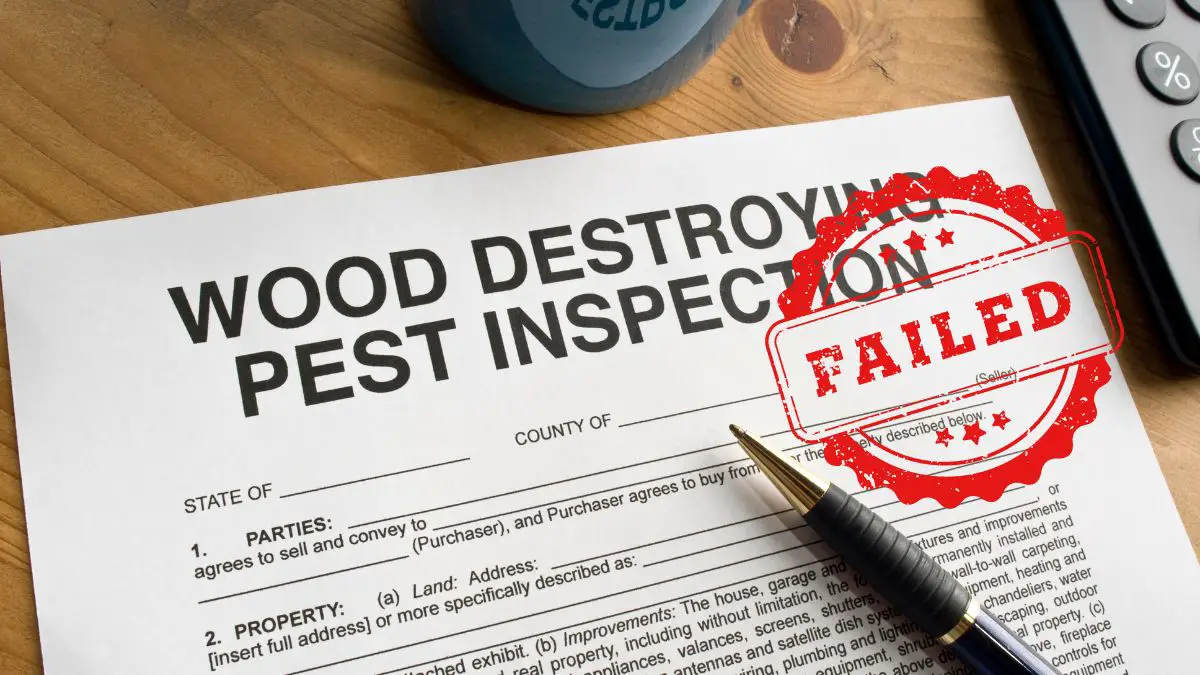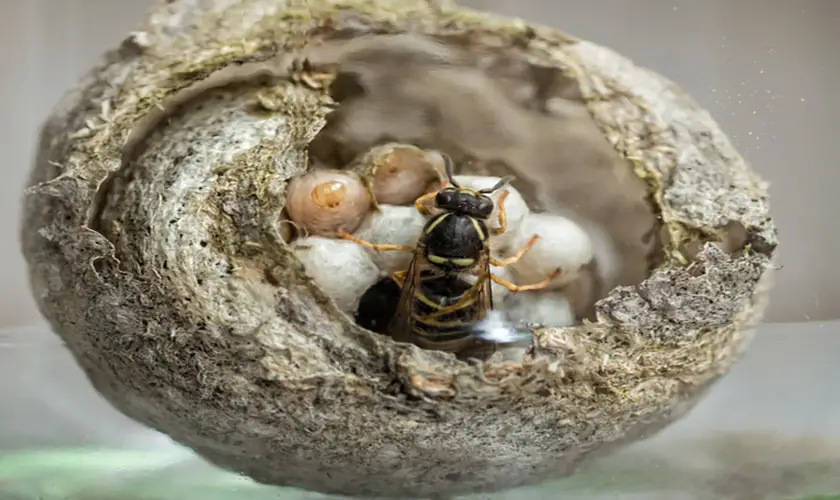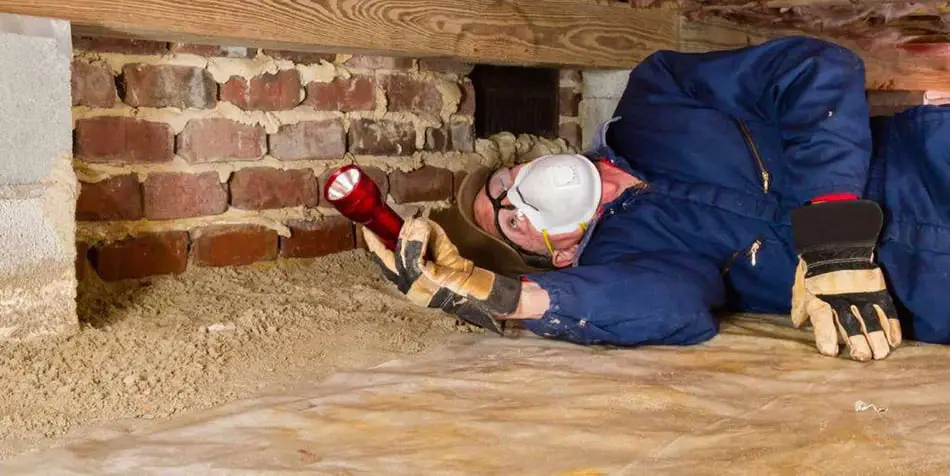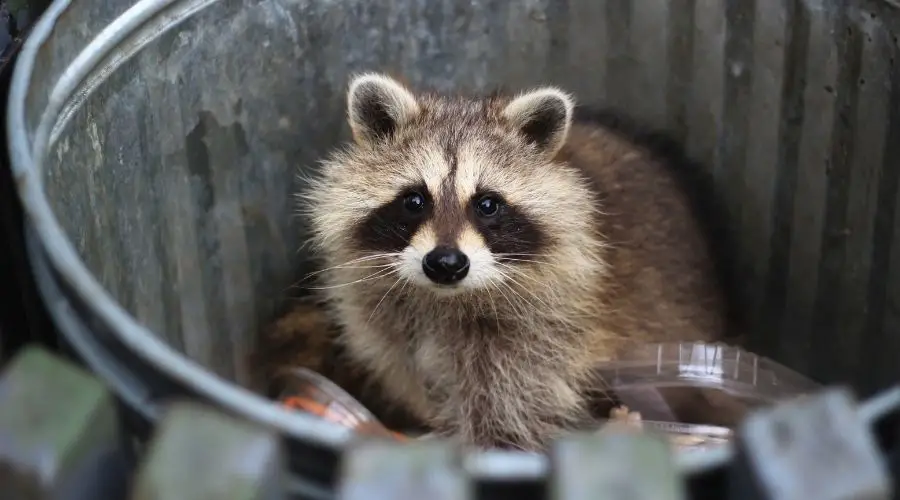
If you are hearing scratching or some other strange sounds from your attic, perhaps you have seen odd scratches outside your house. If you see either of these signs, you might have a raccoon living in your home.
Here are the 12 signs to tell if a raccoon is in your home:
- You hear strange sounds
- There are piles of poop everywhere
- Loose or broken fencing
- You spotted them on the roof
- Scratches on wood or vinyl floors
- Dirty or dusty footprints in your venting systems
- Random smudges around your home
- Open holes in your foundation
- Obvious trails and parts of insulation in the attic
- Nesting materials
- Visible damage
- Your garbage can is knocked over
Get FREE quotes from licensed pest control technicians in your area today. Whether you need spraying for ants, roaches, spiders, ticks, mosquitos, or bed bugs, We Can Help! All technicians are screened, licensed, and insured.
As you continue to read this article, we will discuss all the potential signs you can look for if you are wondering if raccoons are sneaking in and living with you in your own home. Afterward, we will discuss a few ways you can get rid of those pesky raccoons.
How To Tell If A Raccoon Is In Your Home
Raccoons may look cute and cuddly. However, they can be quite a nuisance and get very aggressive when they feel cornered. On top of that, they can be pretty destructive to your property. They are scavengers and will find a way into your garbage cans and tear everything to shreds looking for food and making a massive mess.
Raccoons are known to be carriers of certain diseases, including infamous rabies and Lyme disease if they carry ticks.
Know there should be no reason you would want wild raccoons living in the same building as you. Below will be a list of signs you can look for if you are worried that a raccoon might be living in your home with you.
1. Strange Sounds
Strange sounds coming from your attic or below your home usually are the first thing you will notice. Raccoons make a great deal of noise, even when trying to be as quiet as possible. You can hear their footsteps and nails scratching on the wood flooring of your attic.
You can also expect to listen to snarls and thumps from potential roughhousing or fighting and even kitten-like mews. If you hear these sounds, there is a chance that at least one raccoon lives in your attic or under your home. Hearing these sounds should encourage you to investigate further.
2. There Are Piles Of Poop Everywhere
Raccoons are pretty clean animals, have a strong sense of smell, and prefer not to live in and around their poop. These creatures make a habit of forming piles of waste products around the areas they live. Wherever they go to the bathroom essentially becomes their toilet, in a sense. These piles of fecal matter are a dead giveaway that there is a raccoon den in the area.
Raccoon droppings resemble those of a tiny dog. They have a black hue and a foul odor and frequently contain undigested seeds or other food. Because latrines are often used, old, dry droppings are commonly combined with fresh, moist ones.
Look for these raccoon droppings around areas you suspect raccoons may be used as an entry point into your home. If you find a decent pile of poop in one place, you are looking at that pesky raccoon’s bathroom, search around that area more thoroughly, and you may find the entry point they are using.
3. Look For Loose Panels Or Vinyl Fencing
When inspecting your home, do a push test on the soffit panels or vinyl fencing that might guard the underside of your porch and roof. Because these panels and fencing are made of vinyl, they can be easily pushed aside by a raccoon.
Depending on how well you or someone else installed the panels, it might make it harder for the raccoons to get in and out and for you to find their entry point because the vinyl can kind of snap back into place.
While you are investigating, if you find any loose panels or fencing, look around for one of those poop areas we just spoke about above. If you find one of those, congratulations, you have found an entry point the raccoons use to get into your home.
4. Consistent Roof Sightings
It is common to see raccoons on top of your home every once in a while. This is especially true if you live near some tree overhang. However, if you see raccoons on top of your roof every other night, that is a good indicator that those pesky raccoons might have or are trying to find a way into your attic to set up their den.
5. Scratches On Woodwork Or Vinyl In Your Home
If you do indeed have curious raccoons looking to make a den in your home, or they already are living there unannounced, scratches can be a dead giveaway.
If your porch or deck had an overhanging roof, and you see a decent amount of scratches on one if not a few of the large wooden posts supporting the ceiling, then there is a good chance that raccoons are using the poles to climb up to your roof. If there are many scratches, you would know that the raccoons have found a reliable way to and from their den and have made it to your attic.
The same goes for vinyl. If you have strong vinyl fencing under your porch or soffit panels under your roof, the raccoons will have to scratch at them to push or peel them back so they can get in.
6. Dirt Or Dusty Footprints On Your Air Conditioner
As you are looking around your home, take a minute and investigate your air conditioning unit. There may be some footprints on or around it. Raccoons that have made their way into your attic have been known to use the ductwork to travel from one part of your home to another. It is another entry point that the raccoons can use if your unit is in a bad state of disrepair.
7. Unexplained Dirty Smudges & Smears In Your Home
Dirty smudges and smears around your home are another clear sign of animal activity. While raccoons are fairly clean animals, they can still be dirty.
A raccoon walking around your home can rub against something and leave a smudge of dirt and dust where they made contact. These smudges and smears are most noticeable around the entry point they use to enter your home.
8. Open Holes In Your Foundation
Open holes in your foundation are like a personal invitation to many wild animals and critters to come and make a home with you. If you notice any of these while looking for signs of raccoon activity, there is a good chance they are using that as an entry point, especially if you can see the dirty smudges and smears on the edges of the hole and some poop nearby.
9. Obvious Trails & Parts In Your Insulation In The Attic
During your investigation, at some point, you will need to go into your attic. Depending on where you live, you will have varying amounts of insulation to keep your home nice and warm. Raccoons that live in your attic need to move that insulation around to make their den and pathways to and from the entry points they use to get in and out.
10. Nesting Materials
Look around your property for evidence of raccoon nesting materials if you believe a raccoon has gained access. Raccoons will instantly begin constructing nests to make themselves at home. They are incredibly resourceful animals who would utilize almost anything to build a nest.
They will bring in a lot from outside, including leaves, twigs, and other detritus, but they will also pull up insulation and fabric from the attic to make bedding. One of the most typical indicators you are dealing with a raccoon is twigs and leaves thrown throughout the area and torn cloth and paper.
11. Visible Damage
To emphasize the size aspect of these creatures once more, raccoons can make a huge mess in a short amount of time, mainly if they are in your attic. They have razor-sharp teeth and claws, and they will gnaw through timber support beams, roofing tiles, and drywall. Look for any visible evidence of damage to your property’s walls, floor, and ceiling when inspecting your attic area.
If a raccoon becomes confined and scared, it will destroy your attic space in a couple of hours. A raccoon will damage your insulation, wiring, structural beams, and HVAC components even if it only takes up residence and is not trapped.
12. Garbage Cans Have Been Tampered With
As previously stated, raccoons are notorious for rifling through garbage cans and dumpsters while scavenging for food. Because they are constantly messing with the garbage, the nickname “trash panda” comes into play.
If you go outside one morning and see your garbage cans knocked over and trash all over your yard, that is a clear indicator that raccoons have been there recently. This is frequently due to raccoons finding a garbage can that was not properly secured and is not a primary indicator that raccoons live with you in your home.
If this happens regularly, this can indicate that raccoons may live close by, in your attic, or under your home. Secure your trash can properly or get a new one if applicable.
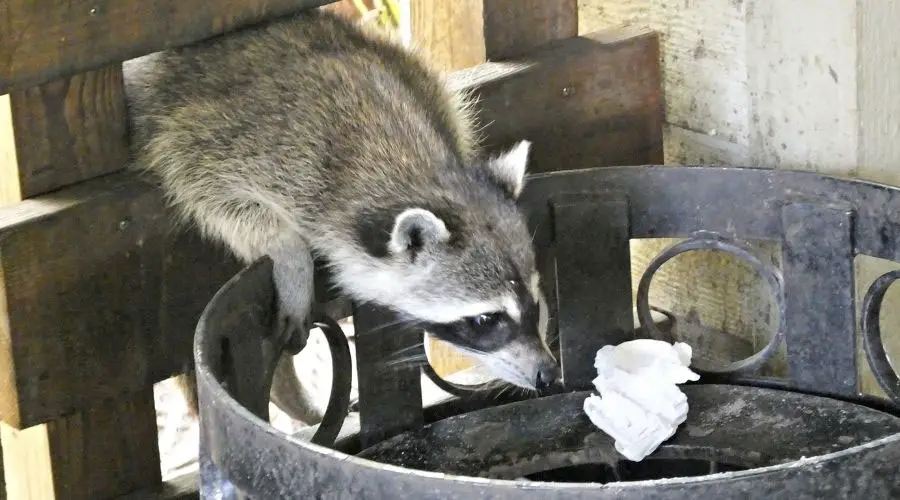
How To Get Rid Of The Raccoons In Your Home?
Once you have identified a good few of these signs, there should be no doubt in your mind that you have unwelcome house guests living with you. It is time to figure out how you will get rid of those pesky raccoons.
Firstly, the easiest thing for you to do in all pest control situations is to call a professional pest control agent to come out and investigate for themselves, start their trapping process, and remove the raccoons from your home. This will save you a butt load of effort and time with a cost.
Pest control professionals will loosely follow the steps and guidelines we will discuss below. However, their efforts differ mainly based on their equipment and knowledge of the animal and the exact situation they have on their hands when they come to investigate your raccoon problem.
For instance, if they confirm the presence of raccoons in your home, if the raccoon is present at the time of inspection, the pest control agent may be able to capture the raccoon with their dual release leash pole and stick them in a cage for transport. Otherwise, they might have to set up their traps and bait and ask you to carefully check the cell every so often.
If you think the cost of a professional pest control agent might be too expensive or have a go-get-em attitude, you can start catching and releasing the raccoons yourself. We will be going over the steps you need to take below.
DIY Trapping & Releasing A Raccoon
Depending on the situation, raccoons may be both terrifying and adorable. These creatures may penetrate your home, and some people opt to put up a trap to kill or capture the raccoons. However, catching a cage-shy raccoon is not easy and can be costly.
Raccoons in the wild are not allowed to be kept as pets in homes. As a result, they cannot be carried into houses, attics, or any other place where humans will be present. This is mainly due to the dangers and threats caused by wild animals’ presence.
If catching a raccoon proves challenging, you must first set up a time to do it. It is preferable to capture raccoons before the season starts to acquire weight for the winter. Raccoons may consume whatever they come to find during a drought, including fruits and kernels left out as bait.
The cage’s placement is critical because it will influence whether you succeed or fail. The den’s escape is the best location to be most of the time. Place the trap at the water’s edge since raccoons love to wash their food before eating it. The raccoon will leave traces as it approaches the den.
You should be aware of the legal measures used to catch the raccoon if it is hesitant and challenging to enter the enclosure. You must get authorization before using or installing the traps near a public house. You should also catch raccoons and not other animals that may share the same environment, such as skunks.
Depending on the season, you will need to decide what kind of bait to employ. Sweet foods that can be used as bait are available during the season. Kernel and watermelon are two possible substitutes. Raccoons afraid of being trapped in a cage may realize they are too smelly and enter the cell independently.
If you put the trap in an old house, it will likely not join fast, so choose the ideal spots near their home. Put on a helmet and gloves before trapping the raccoons.
Trapping A Raccoon
When capturing the raccoon, selecting the appropriate tools is critical. You’ve most likely seen the traps you will need. These traps are available with a single or double door. Both have their pros and cons. The single-entry door is quicker to put up and bait.
Still, the double-entry door gives the raccoon a clear line of sight through the cage, giving them the impression that it is a tunnel rather than an enclosed area, which can help relax the raccoon and make it more appealing inside.
The proper placement is essential for capturing troublesome raccoons regardless of the trap you employ. Setting traps where you have observed the raccoons in question or witnessed the damage caused is a good place to start.
Raccoons, on the other hand, like enclosed spaces that keep them secure, so placing cages in the open or in the center of your yard is unlikely to yield results. Raccoon traps may be most effective around your fence, porch, side of your house, outbuildings, and under shrubs.
If you’ve seen or heard raccoons in your attic or garage, placing traps would be a huge help to your cause. Taking care of problematic raccoons that have gained access to your home is the most hazardous and should be dealt with first.
Disguising the trap is an option you may explore. Leaves and grass from the surrounding area might be used to aid when trapping clever or cage-shy raccoons, making the cage appear less like a cage should assist.
What Bait Should I Use When Trapping A Raccoon?
The raccoons you wish to get rid of might be simpler or more challenging to catch, depending on the season. Raccoons seek food in the winter, somewhat like bears preparing for hibernation. Raccoons do not necessarily go into hibernation, although they prepare for winter as if they will.
They do this by gathering and consuming a lot of fatty food to build weight and stay warm. You will have your final excellent opportunity of capturing raccoons in the autumn and early winter before their activity slows down throughout the winter.
So, if you want to start capturing a raccoon in the winter, it might be better to wait until the middle of spring. Raccoon trapping is not impossible in the winter, although it is more difficult due to increased activity. Before trapping, a pest management specialist suggests planning for mid-spring. The best way to proceed is to get your traps and decide where to set them while also thinking out what bait to utilize.
Best Baits To Use For Autumn & Winter:
- Fish that are fresh, smoked, or canned
- Dry or wet cat food. The smellier, the better
- Fatty and rich meats such as beef or chicken
- Eggs, which can be scrambled, hardboiled, or whole raw eggs
Raccoons, on the other hand, come out in force throughout the mid-spring and summer months. They shed all of their additional weight throughout the winter, and when spring arrives, it’s time to start foraging for them again.
These animals will seek sweet meals rather than fatty ones throughout these seasons. Instead of cat food and fatty chicken or beef, think strawberries and marshmallows.
Best Baits to Use For Spring & Summertime:
- Sweet fruits, like watermelons or pears
- Vegetables that are coated in sugar or honey
- Marshmallows
- Sweetcorn on the cob
Remember that patience is the key to catching raccoons. Even with the greatest bait, it may take several days to catch a raccoon in the best trap in the best location.

Schedule Out Time To Catch The Raccoon
If trapping a raccoon proves tough, you must schedule a time to do it. If raccoons want to acquire weight for the winter, catching them before the season begins is preferable. During a drought, raccoons eat everything they can find, including fruits and kernels as bait.
Keep in mind where you put the lure while placing the bait within your traps. For single door traps, the bait should be at the far end, and for double door traps, it should be directly in the middle. Also, keep an eye on the amount of bait you place in the cages. If you use too little, the raccoons may not be as attracted. On the other hand, if you use too much, the food will be wasted.
It is time to wait once you have set up the trap and baited it. When heading to the cage, check it every 3 to 4 hours while keeping an eye on your surroundings. Raccoons are astute, as previously said, and if they observe you traveling to the exact location, they may figure out what you are up to.
You should frequently inspect the trap because raccoons can grow agitated if kept in a confined place for an extended time. The longer the raccoon is in the cage, the more difficult it will be to handle and release.
If you wish to re-bait the traps, it will depend on which bait you are using. If you use sweet fruits or whole raw eggs, ensuring that you change the lure every other day is a wise choice. You can get away with changing the bait out every 3 to 4 days for all of the other baits listed above.
Rinse and repeat this process, so to speak, until you have caught a raccoon that has been bothering you and your family.
You Have Caught A Raccoon! What Now?
Congratulations on catching your first raccoon, and hopefully the last one you will ever need to catch! Grab a big towel and some heavy gloves.
Slowly and softly approach the cage. Rushing to the cell will frighten the raccoon, making it defensive and aggressive. Cover the cage with a cloth. In doing so, this will help the raccoon relax. It is similar to Steve Irwin covering a crocodile’s eyes with a shirt or towel.
When animals can not see what is happening around them, it usually helps them relax. Ensure you wear your heavy-duty gloves before picking up the cage and moving it away from your body.
Allow the raccoon to accompany you to your vehicle. It is time to take it somewhere and let it out. Take the raccoon at least 5 to 10 miles away from your house.
Choose a location with plenty of trees for shade and a nearby water supply. If you are near other residential areas, you will be pawning your issue on someone else, which is unlawful, and the cops will punish you if you are found doing it.
Place the cage on the ground and take a position behind it. Wait while you open the pen. Raccoons and other confined animals usually dart out of the cell when they find an opening. However, the animal may be too afraid to come out at times. Leave the trap open and back up a safe distance while waiting for it to depart.
Congratulations again! You have managed to capture and release a raccoon. Rinse and repeat as often as necessary until the problem is completely resolved.
Video Summarization
To summarize everything, we have found this extremely helpful and quick 4 1/2 minute video to share with you:
Final Thoughts
Raccoons can be quite dangerous and costly with the diseases they carry and the damages they can cause. Raccoons living in your home are possibly the most dangerous and should be dealt with as soon as you know they are there.
Hopefully, the information we have provided will be enough for you to find out if raccoons are living in your home and how you should deal with them.
Get FREE quotes from licensed pest control technicians in your area today. Whether you need spraying for ants, roaches, spiders, ticks, mosquitos, or bed bugs, We Can Help! All technicians are screened, licensed, and insured.


